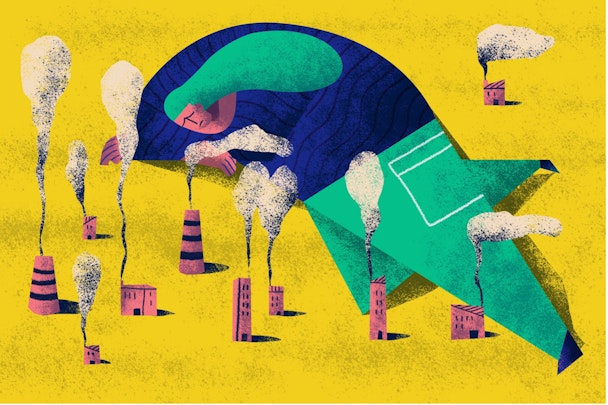Marketers have a responsibility to help marginalized communities lead climate debate
The climate crisis is a health emergency, and the burden falls heaviest on disadvantaged populations, writes Auge Reichenberg of VMLY&R Health.

92% of pollution-related deaths occur in low- and middle-income countries
What if I told you that the marketing industry had been wasting resources in the fight against climate change, though perhaps not in the way you might think?
The populations worst affected by global warming are the same ones that suffer severe health inequalities. Yet, more often than not, the communications solutions that support these huge priorities don’t reach the people who would benefit most. It’s something our industry must do more to shine a low-energy light on. If we’re going to help safeguard the planet, we need to channel our resources to all the right places – not just the obvious ones.
Currently, advertising dollars are heavily weighted toward industrialized markets in the ‘global north.’ We all know why. However, the populations hit hardest by climate change typically live in disadvantaged ‘global south’ nations and marginalized communities where access to healthcare is scarce. Our conscience may cry out in solidarity, but the comms plan may not concur.
The communications gap is entirely at odds with the concept of ecosystem. Climate doesn’t live in isolation – it cohabits with health, culture, economics, nature and more. Unless we connect with all the constituents, we’ll never fix the ecosystem – we’ll only add to the waste.
The impact of climate change on health is all-encompassing. Air pollution is responsible for around 20% of all deaths. Rising temperatures are associated with growing numbers of underweight, premature or stillborn babies, increased risk of malaria and dengue and flooding that spreads food- and water-borne infections. And if global warming causes the 10% decline in crop yields that experts predict, the health burden of malnutrition – which currently affects a third of the population – will only worsen.
Make no mistake, the climate crisis is a health emergency. But look closer and we can see that the burden falls heaviest on disadvantaged populations. 92% of pollution-related deaths occur in low- and middle-income countries. What’s more, UN studies show that marginalized communities are disproportionately located in areas vulnerable to environmental disasters such as flooding, hurricanes and drought – or near land polluted by toxic waste. The repercussions are real:
-
In the six months prior to the pandemic, drought exposed over 45 million people in Southern African countries to severe food insecurity. Covid only added another layer to a health catastrophe
-
Climate-driven increases in mosquito-borne diseases will hit low-income countries such as Ethiopia, Kenya, Somalia and Venezuela hardest
-
In Louisiana, an 85-mile corridor along the Mississippi River – occupied mostly by poor, vulnerable or marginalized communities – boasts 150 chemical plants... and the highest cancer rates in the US.
These examples are just the tip of the ice cap. When you set them in the wider context that half the world is denied access to essential health services, the full impact of climate change on the global south becomes clear.
The intersection between climate, poverty and health can’t be overlooked. So why is it that the people most affected are rarely given a voice or representation? Our industry has a responsibility to help marginalized communities lead the debate and shape the solutions.
As a sector, I think we need to do more to address the disparity that shadows climate change. That mean we must do more to:
-
Raise awareness of climate injustice and its relationship with health – and prioritize investment in solutions
-
Systematically use creativity and communications to showcase climate disparities
-
Use our own sector’s resources wisely; putting people, talents, campaigns and budget where need is greatest
-
Use communications to reach out to the global south to properly engage cultures and communities most affected
-
Empower advocates from marginalized populations to make their voices heard
-
Connect the ecosystem; collaborate across communities, cultures and industries to co-create creative comms that cut through, connect and motivate change
Good intentions aren’t enough. If communications is to help eradicate injustices at the heart of climate change – and build on the momentum of this year’s Cop26 – we must practice what we preach and channel our resources effectively. Ultimately, the drive for equality must extend to marketing communications – because the health of our ecosystem depends on it.
Auge Reichenberg is chief creative officer for VMLY&R Health US.
